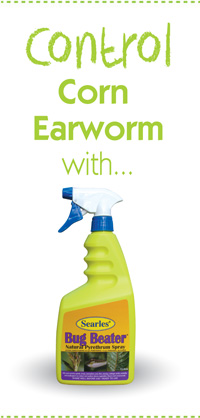Control Corn Earworm - Treatment
|
What are Corn earworm, Budworm (Helicoverpa armigera) symptoms? Corn earworm or budworm is the larval stage of a small moth that uses many broad-leafed plants along with many grasses and sedges as host plants for its life cycle. It is the caterpillar that is responsible for the damage to flowers and sometimes even fruit by burrowing through the unopened flowers and flesh of the fruit. The tiny caterpillar is green in colour and rests within crevices, or within fruit and flowers of the developing plants and are most active through the night.
Flowers will have small holes through the unopened buds, while the fruit will also have holes. Grasses and sedges will have the newly emerged and unfurling foliage damaged and distorted and fail to thrive. Caterpillars are most active during the spring and summer periods when plants are in full active growth. Adult moths emerge in the spring to begin the cycle once more.
Corn earworm has proven that it is capable of quickly building resistance to many garden sprays, so alternating use of products will defuse this to some extent. Strong cultivation of the soil prior to planting in the spring can also reduce activity while biological control has proven to be positive by encouraging a stronger presence of predatory wasps, Mantis and Hoverflies. Organic sprays in the form of pyrethrum will also help to reduce the likelihood of strong infestations.
|
 |




